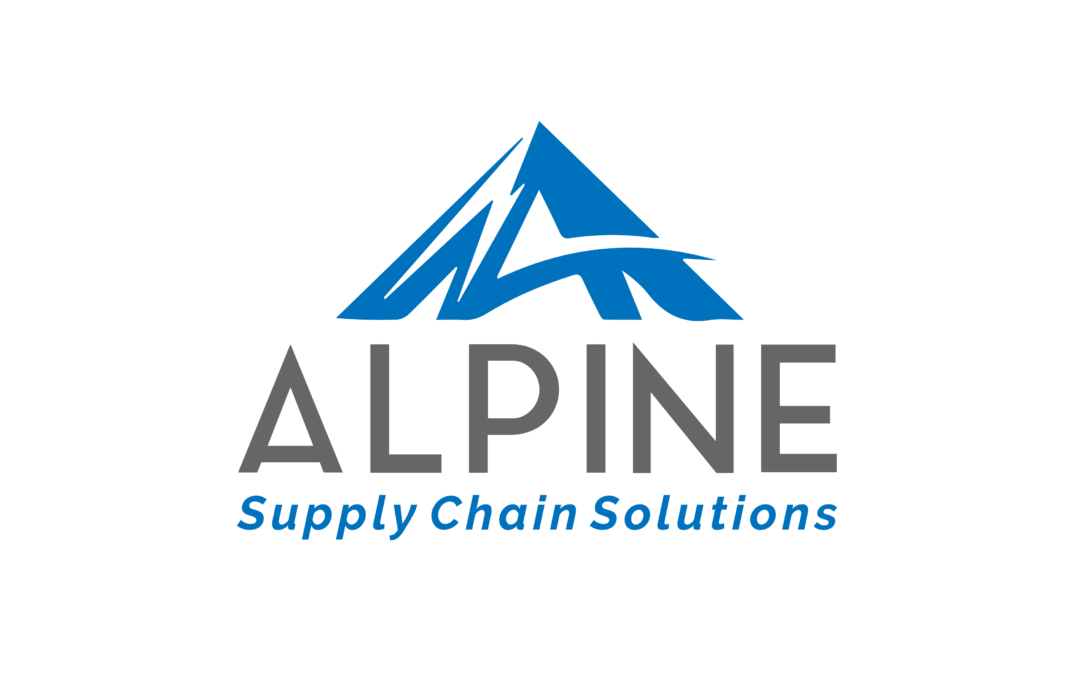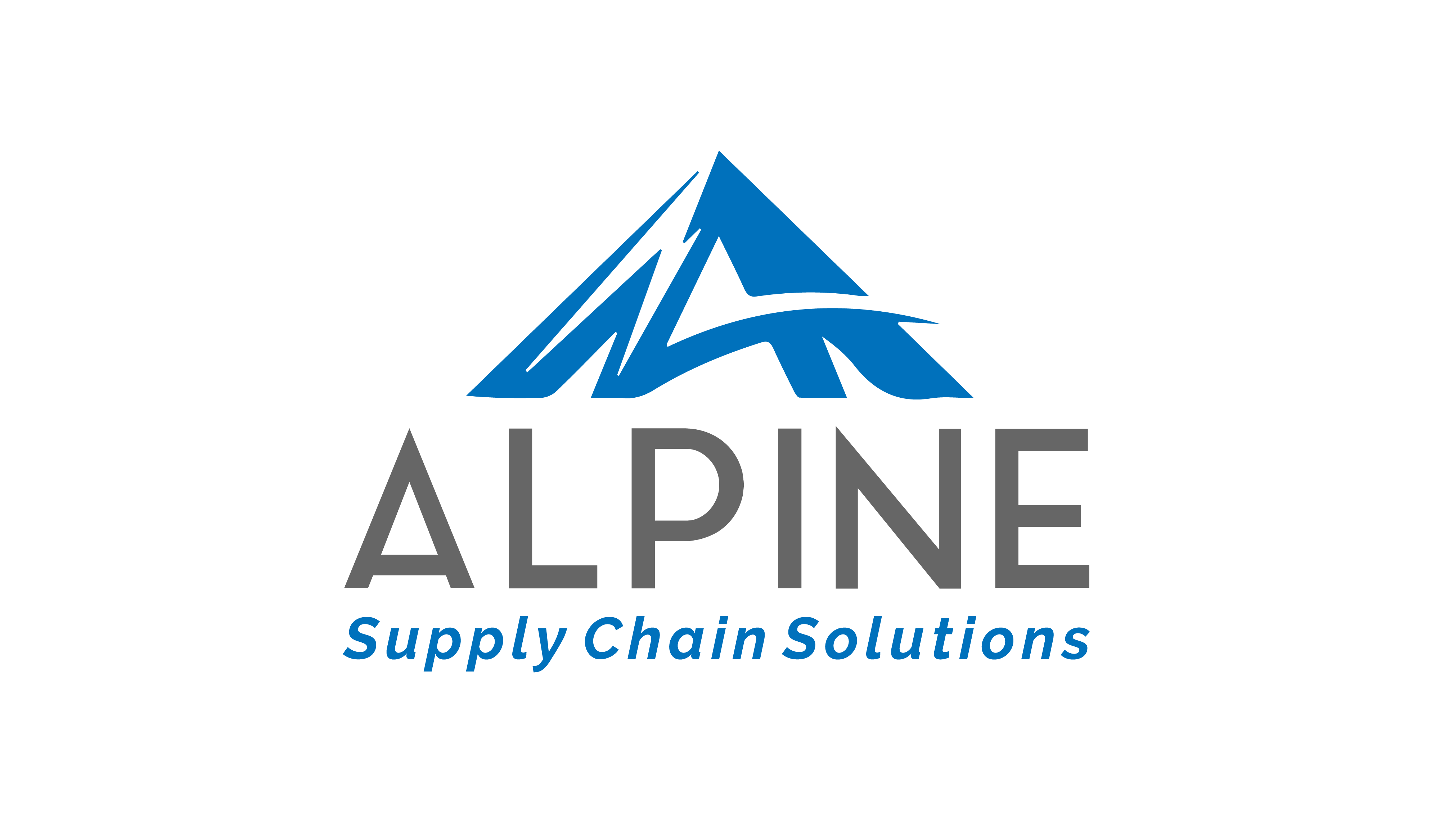
by Alpine Supply Chain | Nov 19, 2020 | Supply Chain Consulting, Warehouse Consulting News
Five questions with Bradley Steger, the newest member of Team Alpine
Q: Why did you decide to join the Team Alpine?
A: There are several reasons I joined Alpine. First off, I’ve known Alpine’s founder, Michael Wohlwend for a long time, and I admire his knowledge and leadership. Next, my background in the supply chain aligns well with what Alpine is doing. I look forward to helping Alpine’s customers and partners move their businesses forward. Finally, who doesn’t want to work in supply chain right now? It is an incredibly dynamic place to be and it will be for the foreseeable future!
Q: What were you doing before you joined Alpine?
A: I was semi-retired and focused on spending time with my family and getting caught on many things that had been second priority to my career. Prior to that, I spent 30 years working in supply chain management with a focus on warehouse management; software mergers, acquisitions, and divestitures; and program/project management.
Q: What professional accomplishments are you most proud of?
A: I’ve blazed a lot of unchartered territory. Throughout my career, I was frequently assigned to lead many ‘first-ever’ projects, including the production of Catalyst’s first annual plan, Agilent’s first Sarbanes Oxley certification, and Aptean’s first acquisition. I’m proud that I’ve been able produce results without a roadmap or template, and that I’ve always tried to take in account the most important thing for every company – its employees.
Q: Why do you do what you do?
I think there are a lot of exciting opportunities out there in the supply chain. An aging population means new things for the pharmaceutical industry and the ever-changing retail landscape presents new challenges for retailers and food and beverage manufacturers. I really enjoy making the people around me successful – fellow employees, customers, and partners.
Q: Tell us a bit about who you are outside of work.
I’m married and have two sons, ages 13 and 11. They keep us busy with their sports, including soccer, basketball, and volleyball. We try to spend as much time as possible at our vacation homes in Colorado and Northern Wisconsin. If I have any free time, I like to get outside for some birding.

by Alpine Supply Chain | Oct 29, 2020 | Supply Chain Consulting, Systems Integration Services
Storage Type Analysis yields layout that maximizes the building’s square footage and promises to increase picking velocity
Alpine Supply Chain Solutions, a leader in supply chain consulting, today announced the successful design of a new facility for MJ Holding Company, LLC. MJ Holding is the largest North American distributor of trading cards (including gaming, sports, and entertainment), related trading card supplies, collectibles, toys, and hot trend items. The new facility has begun operations and will soon accommodate all MJ Holding’s inventory storage and distribution needs, while providing space for future growth and allowing for a reduction in costs. MJ Holding has been in the trading card distribution business since 1993. Their effective category management process has helped the company expand its retail distribution footprint across 8,000 retail store locations located in the United States and Canada. Their continual growth means that they frequently need to scale to manage additional items, product lines, customers, and eCommerce orders. This led them to outgrow their current facility. MJ Holding first partnered with Conveyor Solutions to develop a high-level cost estimate for a new facility and get the project approved. The company originally planned to copy their current facility layout and picking process with slight modifications to adapt to a larger space. But Conveyor Solutions brought Alpine Supply Chain Solutions in to perform a Storage Type Analysis (STA) to validate the plan. According to Michael Wohlwend, Managing Principal for Alpine Supply Chain Solutions, “The results of the STA identified what of MJ Holding’s inventory moved too slowly and what percent of it moved too quickly for the planned case flow picking set up, which could result in significant replenishment issues.” A further sensitivity analysis on top moving inventory identified additional changes to the original plan as well. In the end, Conveyor Solutions and Alpine used all the data acquired to identify the most appropriate storage location for each item to be stored in MJ Holding’s new facility. “The combination of Conveyor Solutions’ equipment and installation expertise and Alpine’s data-centric approach powered by Optricity’s OptiSlot DC™ (OptiSlot) Software, allowed us to learn important details about our business that we incorporated into the design and layout of our new facility,” said Mark Zabloudil, MJ Holding’s COO. “We expect the new design and layout will help us to not only increase overall picking velocity, but balance labor, and increase replenishment productivity.”
About MJ Holding Company, LLC
MJ Holding Company, LLC is the largest North American distributor of trading cards (including gaming, sports, and entertainment), related trading card supplies, collectibles, toys, and hot trend items. The company provides retail supply chain management and specializes in category planning, planogram development, initial distribution, replenishment, and modular merchandising for their retail partners. Additionally, they support manufacturers who are looking for retail distribution of their products.
About Alpine Supply Chain Solutions
Alpine Supply Chain Solutions, based in Chicago, IL, is a supply chain consulting company driven to ensure their clients get the most value from their investments. Their approach to every project starts with the data and if you have any questions regarding information in these press releases please contact the company listed in the press release. Our complete disclaimer appears here ends with a cost justifiable solution. With deep roots in industrial engineering, Alpine’s approach is unique. About Conveyor Solutions Since 1996, Conveyor Solutions works as an integration partner for automated material handling and storage systems for the supply chain industry. We focus on understanding the customer’s process and project expectations, then selecting the best equipment required to meet those needs. We build relationships one solution at a time.
About Optricity
Optricity creates and supports warehousing analysis, optimization and performance improvement software. To develop its solutions, including the highly acclaimed warehouse slotting application, OptiSlot DC™, Optricity utilizes a blend of warehousing domain expertise, advanced mathematics and software engineering skills. The Platform of planning solutions includes slotting, profiling, integration, simulation, @Ease Warehousing Technologies™ and the Moves Conductor™ for warehousing operations.
Contact Information
Michael W
Alpine Supply Chain Solutions
http://www.AlpineSupplyChainSolutions.com
(630) 886-4762
Michael Wohlwend
Alpine Supply Chain Solutions
http://www.AlpineSupplyChainSolutions.com

by Alpine Supply Chain | Aug 14, 2020 | Supply Chain Consulting, Warehouse Consulting, Warehouse Management System
Alpine Supply Chain Solutions, a leading boutique supply chain consulting firm, today announced the successful completion of a distribution and throughput project for The Bazaar Inc., the number one seller of brand name merchandise closeouts. Alpine Supply Chain Solutions collaborated with Conveyor Solutions Inc. (CSI) to provide The Bazaar with:
- Improved space utilization
- Increased throughput
- Decreased dock to stock time
- Reduced labor costs
Alpine has always been dedicated to helping clients make the most of the resources they have, rather than reinventing the wheel. This project with Bazaar was no exception. By improving processes and space utilization, Bazaar was able to realize a 25% decrease in dock to stock time, a substantial increase in throughput, and reduce labor costs by 30 percent.

Ryan O’Connor
According to Ryan O’Connor, SVP of Operations at Bazaar, “The combination of CSI’s equipment and installation experience and Alpine’s data-centric approach provided Bazaar with a real-world solution to address our need to be flexible. The team was collaborative from the beginning, and did not try to sell us anything until they determined exactly what we needed. In the end, Alpine developed a very simple solution to handle a very complex problem.”
When Bazaar began working with CSI and Alpine, the company was at capacity and unable to cost-effectively scale and engage in new opportunities. Despite the addition of new real estate, they continued to struggle. In the end, eliminating duplicate administration, management, and transportation tasks and consolidating two facilities into one with a more efficient layout turned out to be the answer.
According to Michael Wohlwend, Managing Principal at Alpine, “The key to success in this project was tied to studying data to gain a true understanding of orders, items, product types, and quantities and architecting a solution around that reality.” Kevin Thompson, Partner at CSI, feels Alpine’s focus on data is what made the joint effort so successful. Thompson states, “Working with Alpine to define the project requirements based on the actual data analysis has proven time and again the best way to accomplish the customer goals. Projects without Alpine’s analysis tend to have variable ways to determine success.”
About The Bazaar Inc.
The Bazaar Inc. is a family-owned business that has been leading the charge in purchasing name-brand closeouts to be sold on the secondary retail market for 60 years. The company moves hundreds of thousands of units of retail and CPG goods through small to large retail and wholesale partners around the world. As a trusted liquidation partner to manufacturers, Bazaar provides a unique and valuable inventory asset-recovery re-processing service that is unmatched in the marketplace. To learn more, visit: http://www.thebazaarinc.com.
About Alpine Supply Chain Solutions
Alpine Supply Chain Solutions, based in Chicago, IL is a supply chain consulting company driven to ensure their clients get the most value from their investments. Their approach to every project starts with the data and ends with a cost justifiable solution. With deep roots in industrial engineering, Alpine’s approach is unique. For more information, please visit the company website at: http://www.AlpineSupplyChain.com.
About Conveyor Solutions, a Systems in Motion Company
Conveyor Solutions based in Elgin, IL is an Automated Material Handling Integrator driven to build relationships with our customers for long term partnerships. We create an environment of collaborative design with our clients to achieve the goals of the project. Systems in Motion is a team of companies that work together to provide a complete turnkey solution. Learn more at: http://www.conveyorsolutions.com.

by Alpine Supply Chain | Aug 4, 2020 | Services, Supply Chain Consulting, Warehouse Consulting, Webinar
In this WERC Webinar, The Midwest WERCouncil and Alpine Solutions’ Brenda Stoltz and David Fredericks, experts in operations management conducted a webinar on How to Establish and Sustain SOPs in Your DC. You can watch now on demand.
Brenda and David dive into:
- Why standardization and consistent execution of procedures are important
- How to assess and document your current state
- Identifying and validating improvements
- Implementing new standards
- Managing ongoing oversight, compliance and continuous improvement

by Alpine Supply Chain | Jul 13, 2020 | Supply Chain Consulting, Supply Chain News, Warehouse Management System
Supply Chain Management Review and Modern Material Handling sat down with Michael Wohlwend to discuss WMS.
Modern: You’ve been around the supply chain software space throughout your career. Tell us about the different roles you’ve held.
Wohlwend: I was a warehouse distribution supply chain consultant for the first third of my career, and I installed my first warehouse management system (WMS) in 1994. That was followed by 7.5 years at Manhattan and 6.5 years at SAP. Now, I’m back to the consulting side.
Modern: Since you’ve worked in both the enterprise resource planning (ERP) and WMS spaces, what have been the most important developments during your career? We’ll start with ERP.
Wohlwend: Originally, an ERP system was finance and accounting. And then, they added manufacturing resource planning and planning. After that, ERP tried to be all things to all people and address the end-to-end supply chain. That had its limitations and opened the door for best-of-breed solution providers, especially with the Cloud.
Great examples of that are Salesforce.com for CRM and Workday for HR. Now, we see ERP companies buying Cloud-based software companies with a subscription model to offer best-of-breed solutions under the ERP umbrella. The technology is evolving.
Modern: How about the WMS space?
Wohlwend: For a time, CIOs trying to reduce their overall software footprint were getting the WMS module from an ERP provider like Oracle or SAP. In situations that weren’t complex, like pallet in and pallet out, the WMS from an ERP was good enough. Now, there’s a resurgence of WMS. The real trend I’m seeing is global manufacturers moving to a 3PL for their distribution and deferring to the 3PL’s WMS. And, most of the 3PLs will have a low-cost WMS, with less functionality, and a higher cost version. Depending on complexity, the 3PL will choose which version to roll out for their customer.
Modern: What are your clients struggling with today, particularly with WMS systems?
Wohlwend: Whenever you’re implementing a WMS, you run out of resources, time or money. So when people install a WMS, they never turn everything on because they run out of one of those three. Then, they run into an issue and don’t realize they have the functionality.
I recently went to a site that wasn’t doing directed putaway or batch picking because they’d never turned on the functionality. It cost them $52,000 and they had an ROI in two weeks. The No. 2 reason is that they business model changed. For example, with Covid-19 now they may need to turn on each picking and need to configure along with cartonization. Their WMS has the functionality but needs to be configured.
Modern: Given all the changes in fulfillment processes, what should a company do?
Wohlwend: The most common thing I see is that they didn’t turn on all the functionality, and they haven’t upgraded, so now they’re at a pivot point. Do I keep an existing system and “add on modules” like voice, labor management, or slotting modules? Or, do I rip and replace? There are companies adding “Add on Modules” on top of old versions of EXE and Catalyst.
The problem with ripping and replacing is that a lot of the new systems are in the Cloud. That sounds good, but I just worked with a 3PL that couldn’t get Internet access at their site. They had to have a server on site. And when you’re talking about an automated system that requires sub-second response times, I believe it has to be on-premise. You just can’t risk your order fulfillment system on a connection that could go down.

by Alpine Supply Chain | Apr 14, 2020 | Goods-to-Person Tech, Robotics, Supply Chain Consulting, Supply Chain Technology
Michael Wohlwend, Managing Principal of Alpine Supply Chain Solutions sat down with Russell Goodman, Senior Editor of Supply Chain Brain to discuss Goods-to-Person Technology and how Alpine is using tools from several providers to meet clients implementation needs.
“All verticals and all sizes of companies can benefit from implementation of goods-to-person technology”, says Michael Wohlwend, managing principal of Alpine Supply Chain Solutions.
Goods-To-Person Technology
- Storage Analysis identify size and quantity of Pick Locations
- Storage Analysis identify size and quantity of Reserve Locations
- Slotting Optimization
How it works:
“The goods-to-person concept is simple: incoming goods are removed from pallets, either manually or automatically. The cartons and/or pieces are then placed into totes (smaller goods) or into trays (larger goods), and stored in high-density automated storage and retrieval systems (ASRS), carousels or robotic systems. As orders are required to be fulfilled SKUs are automatically retrieved from storage and brought to the picker, either at a pick station where the operator picks into an order container or to an ergonomic palletizing station where items are placed on a pallet. Since the picker does not have to walk, the focus at the pick stations and pack stations is on ergonomics and high productivity.” – Material, Handling, & Logistics









